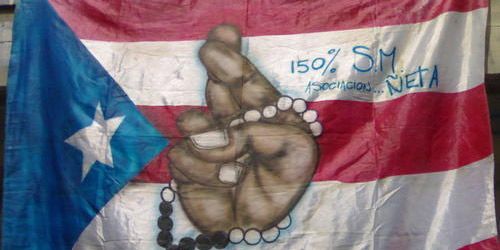Understanding the Complex Reality of Gangs in Puerto Rico
Puerto Rico, a vibrant island known for its rich culture and stunning landscapes, also faces a significant challenge: the pervasive influence of gangs. Understanding the complexities of this issue requires moving beyond simplistic narratives and delving into the socio-economic factors that fuel gang activity and the multifaceted efforts to combat it. This article explores the reality of gangs in Puerto Rico, examining their origins, impact, and the ongoing struggle for a safer future.
The Roots of Gang Violence in Puerto Rico
The history of gangs in Puerto Rico is deeply intertwined with socio-economic inequalities. Factors contributing to the rise of gang activity include:
- Poverty and Lack of Opportunity: High unemployment rates, particularly among youth, coupled with limited access to education and quality job training, create a fertile ground for gang recruitment. Young people, lacking positive alternatives, may see gangs as a source of belonging, identity, and even income.
- Drug Trafficking: Puerto Rico's geographic location makes it a strategic hub for drug trafficking, particularly cocaine. The lucrative nature of this illegal activity fuels gang violence as various factions compete for control of territories and distribution networks.
- Weak Social Safety Nets: Insufficient resources allocated to social programs, including mental health services and youth outreach initiatives, leave vulnerable populations susceptible to gang recruitment and influence. A lack of community support and positive role models further exacerbates the problem.
- Historical and Political Factors: The island's colonial past and ongoing political complexities have contributed to a sense of marginalization and disenfranchisement among certain communities, making them more vulnerable to gang influence.
The Impact of Gang Activity
The impact of gang violence extends far beyond immediate victims. It affects:
- Public Safety: Increased crime rates, including homicides, robberies, and assaults, create an atmosphere of fear and insecurity, impacting the quality of life for residents.
- Economic Development: Gang activity discourages investment, hinders tourism, and creates instability within the economy. The cost of policing and addressing the consequences of gang violence places a strain on public resources.
- Social Cohesion: The presence of gangs erodes trust in law enforcement and community institutions, contributing to social fragmentation and a sense of powerlessness among residents.
- Education and Healthcare: Gang violence disrupts educational opportunities for children and young people, impacting their future prospects. Access to healthcare is also compromised in areas heavily impacted by gang activity.
Combating Gang Violence: A Multifaceted Approach
Addressing the complex issue of gang violence in Puerto Rico requires a comprehensive strategy encompassing:
- Improved Socioeconomic Conditions: Investing in job creation programs, affordable housing, and improved educational opportunities is essential to tackle the root causes of gang involvement.
- Strengthening Law Enforcement: Enhanced police training, improved intelligence gathering, and collaboration with federal agencies are vital for disrupting gang operations and prosecuting gang members.
- Community-Based Initiatives: Empowering communities through youth programs, community policing initiatives, and social services helps to foster a sense of safety and belonging, providing alternatives to gang life.
- Addressing the Drug Trade: Aggressive efforts to dismantle drug trafficking networks are crucial in reducing the financial incentives that fuel gang violence. This includes international cooperation and focusing on supply chain disruption.
- Rehabilitation and Reintegration Programs: Providing opportunities for rehabilitation and successful reintegration into society for former gang members is essential for breaking the cycle of violence.
Conclusion: A Path Forward
The problem of gangs in Puerto Rico is a complex and multifaceted one, requiring a long-term, multi-pronged approach. While law enforcement plays a critical role, addressing the underlying social and economic factors is crucial for long-term sustainable change. By investing in communities, improving living conditions, and providing opportunities, Puerto Rico can create a safer and more prosperous future for all its citizens. The ongoing fight against gang violence demands sustained commitment from government agencies, community organizations, and the people of Puerto Rico itself. Only through a collaborative effort can the island hope to overcome this significant challenge.

